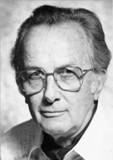Awardee Interviews | Biography: George Comsa
George Comsa

The Medard W. Welch Award was established in 1969 to commemorate the pioneering efforts of M.W. Welch in founding and supporting the American Vacuum Society. It is presented to recognize and encourage outstanding research in the fields of interest to the American Vacuum Society. The award consists of a medal and a cash prize.
Dr. George Comsa, Institut fur Grenzfachenforschung und Vakuum-physik, Germany, "for seminal discoveries and investigations in vacuum and surface science, in particular the extensive development of thermal-energy atom scattering for the structural analysis of surfaces. "
comsa.JPGGeorge Comsa was born in Bucharest, Romania and completed his studies at the University of Bucharest where he received his BS degree in Physics in 1953 and his PhD degree in 1960.
From 1953 to 1972 he was a member of the staff of the Institute of Atomic Physics of the Romanian Academy of Sciences. In 1972 he emigrated to Germany after being there in 1970-71 as an Alexander von Humboldt Fellow. He settled at the University of Bonn and in 1974 became Professor of Physics at Bonn as well as Director of the newly created Institute for Surface and Vacuum Physics at the KFA Julich. He has been guest professor at the Ecole Polytechnique Federale de Lausanne, Switzerland (1986), at the University of California, Irvine, USA (1989), and at the Universite Aix-Marseille, France (1992).
Professor Comsa's research has touched an extremely broad spectrum of topics of interest to the American Vacuum Society. His early research at Bucharest was molded by the existing severe technical and economic constraints, which made him concentrate a large part of his efforts on development and construction of equipment in order to create the conditions necessary for surface studies in a UHV environment. Starting with stainless steel, W, Ta, Mo and Ti wires, sheets and rods, glass tubes and home-made ceramics, he succeeded in building ion- and ion- sputter-pumps, UHV-gauges, omegatrons, UHV-feedthroughs, valves, and other necessary instruments. To assemble the equipment, he developed electron beam welding machines as well as new procedures for metal-ceramic seals. From this work emerged a number of patents, ranging from developments in ion pumps to ceramic feedthroughs.
These technical developments were accompanied by experimental and theoretical studies that have found a remarkable resonance in the scientific literature in spite of the unfortunate political isolation. Among them were an explanation for the instability of Bayard-Alpert-gauges; the analytical description of the pressure variation in ion pumped UHV-devices; and an explanation of the behavior of ions in the omegatron.
At the Institute of Surface anoVacuum Physics in Julich Professor Comsa has been successful in developing and bringing to world-wide prominence two very diverse directions: vacuum instrumentation and surface physics. The work on instrumentation has focused on both the development of magnetic-levitation devices to produce and measure vacuum and on scanning tunneling microscopy. The three most widely known and used magnetic-levitation devices originating from the efforts at Julich are the spinning-rotor friction gauge, the magnetically suspended turbomolecular pump, and pseudo-random choppers for time-of-flight measurements in atom and neutron beams. Because of its unprecedented accuracy and reproducibility the spinning-rotor friction gauge was chosen in 1978 by the "Bureau International des Poids et Mesures", Sevres, France as international transfer standard. It has since then been used as a basic instrument in all national-standards institutions in order to compare the national standards world-wide. Scanning tunneling microscope development in his lab have led to the "beetle" STM, a widely used instrument remarkable for its simplicity, versatility, and reliability. All of these instruments are commercially produced.
Professor Comsa's research in surface physics began at Julich with investigations of the dynamical parameters of desorption. The early work on desorption and molecular-beam scattering led, through a variety of instrumental and methodological innovations, to the establishment of highly efficient and muItifacetted beam scattering machines that have been used for a continuous stream of seminal investigations on surface structure in particular, surface disorder. From the observation that isolated defects have extremely large cross sections for diffuse scattering, George and his colleagues developed theoretically and experimentally the field of disorder studies with molecular beams. They applied these scattering and diffraction techniques to a range of problems.
Most recently George and his students have combined STM and high-resolution He diffraction techniques to investigate the growth of metals on metals as well as the ablation of metals at the atomic level. Through these measurements he has demonstrated a number of novel features. Most recently he has been able to observe individual sputtering events in the STM and through these observations establish new concepts for the mechanism of sputtering and obtain sputter yields at very low energies.
Professor Comsa has authored over 225 publications and one book. Since 1986 he has been Regional Editor of Surface Science and is especially in demand as a member of international advisory panels and scientific councils in a number of countries. He received the Gheorghe Lazar Prize of the Romanian Academy of Sciences in 1961 and the Humboldt Prize for contributions to French-German scientific collaboration in 1993.